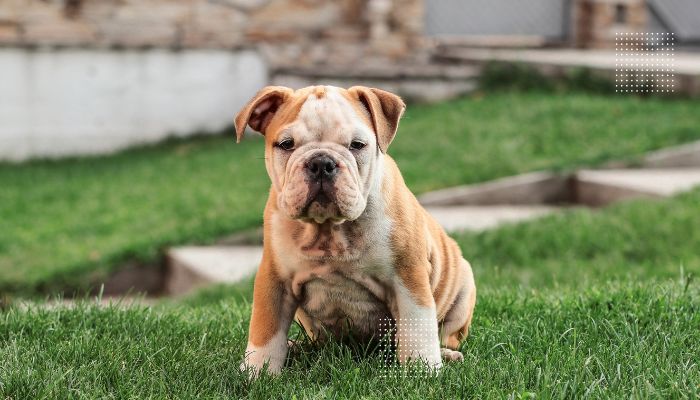Bulldogs can be good with kids if they are properly socialized and trained to behave around children. It’s important to keep in mind that all dogs, regardless of breed, have the potential to behave aggressively if they feel threatened or uncomfortable.
Therefore, it is important to supervise any interactions between children and dogs, and to teach both kids and dogs how to behave appropriately around each other. It’s also important to remember that children should never be left alone with a dog, even a breed that is generally known to be good with kids.
Bulldogs can be good family pets because they are generally calm and affectionate, but they do require some special care due to their short noses and tendency to snore and drool. They are prone to a variety of health issues, such as respiratory problems and obesity, and may need more frequent grooming and medical attention than some other breeds.
If you are considering adding a bulldog to your family, it is a good idea to do some research and talk to a veterinarian or a breed-specific rescue group to learn more about the breed and whether it is a good fit for your family. It is also important to spend time with the individual dog you are considering adopting to make sure that it is a good match for your family.

Table of Contents
How to raise a bulldog around young children
Bulldogs can be great companions for families with children, but it’s important to take some precautions to ensure that everyone stays safe. Here are some tips for raising a bulldog around young children:
Supervise all interactions: Children and dogs should always be supervised when they’re together, especially if they’re meeting for the first time. This will help you to identify any potential problems and intervene if necessary.
Teach children how to behave around dogs: Children should be taught to respect dogs and not to tease or bother them. They should also be taught to ask an adult before approaching a dog, and to leave a dog alone if it is eating or sleeping.
Train your bulldog: It’s important to train your bulldog to behave well and to follow basic commands such as “sit,” “stay,” and “come.” This will make it easier for you to control your dog’s behavior around children.
Socialize your bulldog: Socializing your bulldog from a young age will help it to become comfortable around people and other dogs. This can be especially important if you have young children in your home, as it will help your bulldog to be more accepting of their presence.
Use caution with younger children: Bulldogs are generally good with children, but they can be boisterous and energetic at times. If you have very young children, it may be best to wait until they are a little older before introducing a bulldog into your home.
By following these tips, you can help to ensure that your bulldog and your children have a happy, healthy, and safe relationship.
How to raise a bulldog around infants?
It is important to carefully introduce a bulldog to infants and young children. Bulldogs can be gentle and affectionate, but they are also a large breed with a strong jaw and can unintentionally cause injury if they become overly excited or play too rough. Here are some tips for raising a bulldog around infants:
Start early: If you are planning to have a bulldog and a baby in the same household, it’s important to start preparing the dog for the arrival of the baby as early as possible. This can involve introducing the dog to baby items, such as a crib or stroller, and gradually increasing the dog’s exposure to the sounds and sights of a baby.
Socialize your dog: It’s important to socialize your bulldog to a variety of people, including children, to ensure they are comfortable and well-behaved around them.
Supervise interactions: When the baby and the dog are together, make sure to closely supervise their interactions. Never leave a baby alone with a dog, even if the dog is well-trained and gentle.
Train your dog: It’s important to teach your bulldog basic obedience commands, such as “sit,” “stay,” and “down,” to help you maintain control and prevent any accidents.
Teach your dog boundaries: It’s important to teach your bulldog to respect the baby’s boundaries and not jump on them or nudge them with their nose.
Be consistent: It’s important to be consistent with your training and expectations for your bulldog’s behavior around the baby. This will help the dog understand what is expected of them and reduce the risk of any accidents.
Keep the dog healthy: Make sure to keep your bulldog up-to-date on their vaccinations and preventive care to reduce the risk of any health issues that could affect their behavior around the baby.
By following these tips and being vigilant in your supervision, you can help ensure that your bulldog and infant can coexist safely and happily.
How should you introduce your baby to your bulldog for the first time?
It is important to carefully introduce your baby to your bulldog and to closely supervise their interactions to ensure the safety of both your baby and your dog. Here are a few tips for introducing your baby to your bulldog:
Gradually introduce your dog to your baby’s belongings before the baby arrives. This can help your dog become familiar with the baby’s scent and may reduce the likelihood of the dog being overly curious or possessive of the baby.
Allow your dog to sniff and explore the baby, but do not allow the dog to lick the baby’s face.
Supervise all interactions between the baby and the dog, especially when the baby is very young.
Train your dog to follow basic commands, such as “sit,” “stay,” and “down,” so you have more control over the dog’s behavior when the baby is present.
Never leave the baby alone with the dog, even if the dog has been well-behaved in the past.
If you are concerned about your dog’s behavior around the baby, consider consulting with a professional dog trainer or behaviorist.
By following these guidelines, you can help ensure a safe and positive relationship between your baby and your bulldog.
Tips for making sure your bulldog is ready to be around children
Here are a few more suggestions for ensuring that your bulldog is safe and well-behaved when interacting with children:
Start training early: It’s important to start training your bulldog as early as possible (Because they are aggressive) to ensure that they are well-behaved and responsive to commands. This will make it easier for them to follow instructions and behave appropriately around children.
Use positive reinforcement: When training your bulldog, it’s important to use positive reinforcement techniques such as treats and praise to reward good behavior. This will help your bulldog learn to associate good behavior with rewards and will encourage them to repeat that behavior in the future.
Teach basic obedience commands: Teaching your bulldog basic obedience commands such as “sit,” “stay,” and “come” can help you control their behavior around children. This will make it easier for you to intervene if your bulldog starts to behave aggressively or inappropriately.
Supervise interactions: It’s important to closely supervise interactions between your bulldog and children to ensure that everyone stays safe. This will allow you to intervene if necessary and to make sure that your bulldog is behaving appropriately.
Socialize your bulldog: It’s important to socialize your bulldog from a young age so that they are comfortable around people and other animals. This will help them learn to behave appropriately in social situations and will make them more comfortable around children.
Use caution with unfamiliar children: If your bulldog is not familiar with children, it’s important to introduce them slowly and carefully. It’s also a good idea to closely supervise interactions between your bulldog and unfamiliar children until you are confident that your bulldog is comfortable and well-behaved around them.
